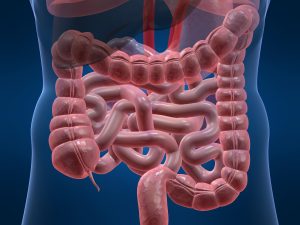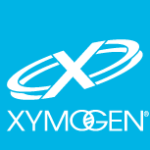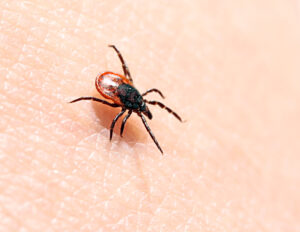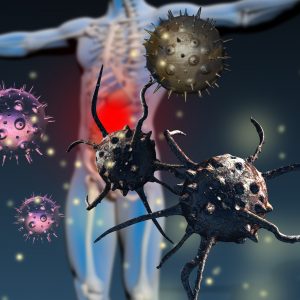
Leaky Gut, Chronic Disease, & Long Term Health
Leaky Gut This blog discusses the very important health issue of leaky gut. You will learn: What is the gut & the gut microbiome What
If you are a doctor or clinician looking to make a bigger impact on the world, have more job satisfaction and have up-to-date protocols and treatment solutions for your patients, check out our free functional medicine training led by functional medicine expert, Dr. Miles Nichols below.
Plus additional BONUS training videos on treating tough cases of brain fog and cognitive impairment!!
In some ways it seems surprising that there are not many functional medicine lab values charts online, but this may be due to the way that functional medicine is practiced. We are going to give you a functional medicine lab values chart further on in this article, so please keep reading.
As guiding principles, most functional medicine clinicians and teachers really value the uniqueness of the individual. Therefore, while it is useful to have a list of reference ranges that functional medicine doctors use, it is also important to understand that while these numbers are important and provide a guide, that we must treat the actual person, which is much, much more than numbers.
For example, some of the research we review in the hormone section of our functional medicine course at our functional medicine school shows that reference ranges for sex hormones vary to a much larger degree than normal functional medicine reference ranges indicate. Therefore, in utilizing the information in this functional medicine lab value chart, please remember that even these reference ranges, while more tuned into optimal levels than standard reference ranges, they are still just a guide. (Check out our free Online Course in the Advanced Treatment and Understanding of Chronic Fatigue Syndrome Here.)
Functional Medicine Lab Value Chart
Thyroid
| TSH: | 0.5-2 uIU/mL |
| Free T4: | 1-2.3 ng/dL |
| Free T3: | 3.3-8 pg/mL |
| Reverse T3: | 11-18 ng/dL |
| TPO Antibodies: | <2 IU/mL |
| TG Antibodies | <2 IU/mL |
| Total T4 | 6-12 ug/dL |
| Total T3 | 100-180 ug/dL |
| T3 Uptake | 28-38% |
**30% increase in thyroid hormones and a decrease in TSH with pregnancy is normal.
CBC
| WBC | 5-10 |
| RBC | 4.4 – 5 (can be higher at higher elevation) |
| HBG | 13.5-15 g/dL |
| HCT | 40-50% |
| MCV | 85-92 fL |
| MCH | 27.7 – 32 pg |
| MCHC | 32-36 g/dL |
| RDW | 11.7-15% |
| Platelets | 155K-379K |
| Neutrophils | 40-60% |
| Lymphocytes | 25-40% |
| Monocytes | 4-7% |
| Eosinophils | 0-3% |
| Basophils | 0-3% |
| Neutrophil/Lymphocyte Ratio | 2/1 |
CMP and Other Markers
| Glucose | 0.5-2 |
| HgA1C | <5.4 % |
| Uric Acid | 3.2 – 5.5 mg/dL |
| BUN | 13-18 mg/dL |
| Creatinine | .65-.9 mg/dL for Females .85-1.1 mg/dL for Males |
| eGRF | >59 mL/min/1.73 |
| BUN/Creatinine | 10-20 |
| Sodium | 134-140 mmol/L |
| Potassium | 4.5- 5.1 mmol/L |
| Chloride | 100-106 mmol/L |
| CO2 | 22-27 mmol/L |
| Anion Gap | Calculation: Na + K – CO2 – CL = 6-16 or: Na – CO2 – CL = 3 – 11 |
| Phosphorus | 3.5-4.0 mg/dL |
| Calcium | 9.2-10.1 mg/dL |
| Magnesium | 2.0-2.5 mg/dL |
| Total Protein | 6.9-7.4 g/dL |
| Albumin | 4.0-5.0 g/dL |
| Globulin | 2.4-2.8 g/dL |
| A/G | 1.5-2.0 |
| Bilirubin direct | 0-0.4 mg/dL |
| Total Bilirubin | .1-1.2 mg/dL |
| Alkaline Phosphorus | 44-90 IU/L |
| LDH | 135-180 IU/L |
| ALT | < 26 Females <30 Males |
| AST | < 26 Females <30 Males IU/L |
| GGTP | 10-21 Females 10-29 Males IU/L |
| TIBC | 250-350 ug/dL |
| Serum Iron | 40-135 ug/dL (if goes on the low end, make sure transferrin is okay) |
| Transferrin | 30-45% |
| Ferritin | 30-100 Females 30-200 Males |
| Cholesterol | 150-220 mg/dL |
| Triglycerides | <100 |
| HDL | 55-85 mg/dL |
| VLDL | <30 mg/dLa |
| LDL | 120 mg/dL * |
| Cholesterol/HDL Ratio | <3 |
| CRP- hs | <1 |
| Homocysteine | <7 umol/L |
| 1,25 Dihydroxy Vitamin D (D2 + D3 fractionated by LC/MS-MS) | 30-60 pg/mL |
| 1, 25 Dihydroxy Vitamin | 45-80 pg/mL |
Does your current health situation look like this…
We specialize in finding answers and solutions for complicated chronic illness when people feel like they have tried everything. If this sounds like you, book a free call with us to see if we are the right fit for your health goals.








Leaky Gut This blog discusses the very important health issue of leaky gut. You will learn: What is the gut & the gut microbiome What

Research on Alzheimer’s disease is continuously looking for what causes the disease and how to better treat Alzheimer’s. A relatively new finding suggests that Alzheimer’s

In this blog, we will look at Lyme Disease and answer the question ‘How does Lyme Disease become chronic?’ You will learn: What Lyme Disease

In this blog, we will look at the causes of Bartonella. You will learn: What Bartonella is and how it compares to Lyme Disease What

In this blog, we will look at the many symptoms of Bartonella. You will learn: What Bartonella is and what causes it What are the

In this blog, we will look at Bartonella. You will learn: What Bartonella is and how it compares to Lyme Disease How Bartonella is spread

In this blog, we will look at Lyme Disease and answer the question ‘Is Lyme Disease curable?’ You will learn: What Lyme Disease is How

In this blog, we will look at Lyme Disease and the growing threat that it has become. You will learn: What Lyme Disease is How

In this blog, we will look at Lyme Disease and mental health. You will learn: How and why Lyme Disease can affect mental health How

In this blog, we will look at cognitive impairment & Alzheimer’s Disease in relation to various lifestyle factors. You will learn: How lifestyle can affect

Alpha Gal Syndrome Today’s article outlines a condition that is thought to affect, conservatively, 3% of the US population. However, there may be many undiagnosed

Can Lyme Disease Cause Joint Pain? In this blog, we will look at Lyme Disease and joint pain. You will learn: How & why Lyme
There was a problem reporting this post.
Please confirm you want to block this member.
You will no longer be able to:
Please allow a few minutes for this process to complete.

